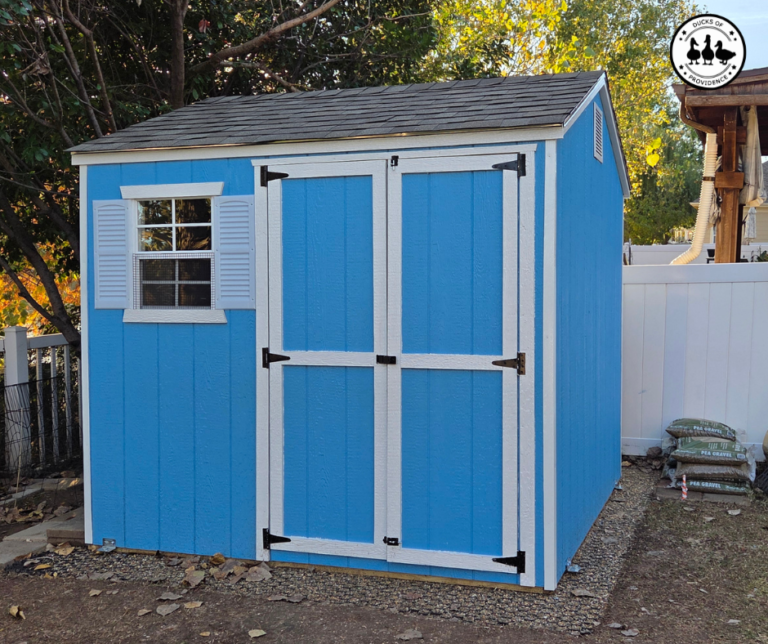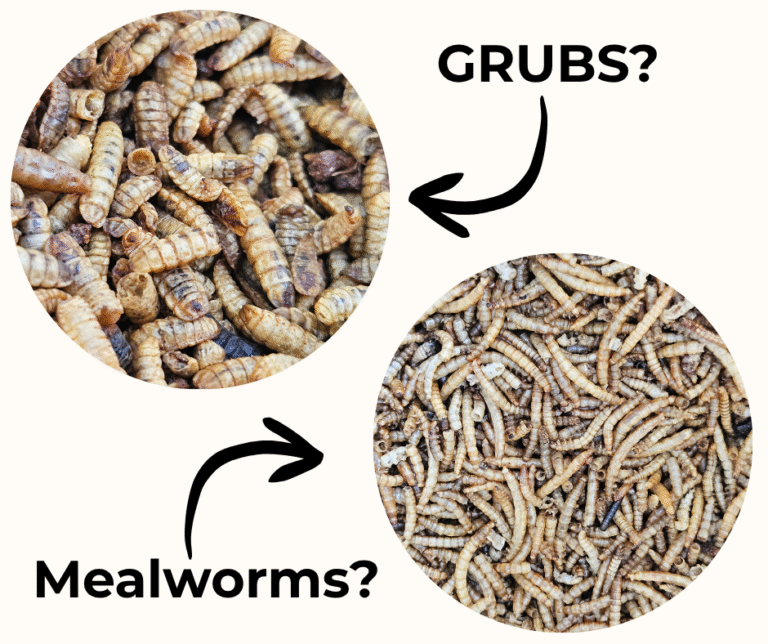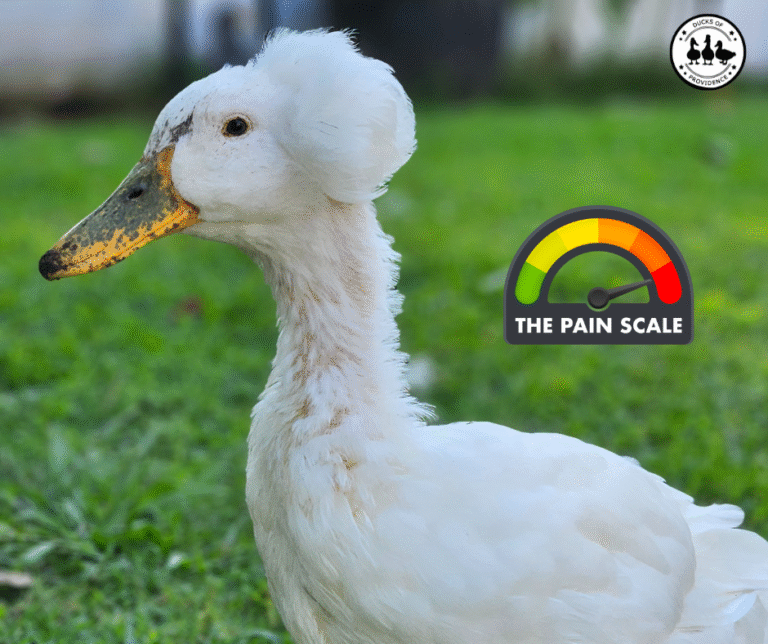
Silver Appleyard Ducks: The Beautiful Heavyweight Champions of Egg Production
Silver Appleyard Ducks are a stunning and versatile breed, cherished for their exceptional egg production, high-quality meat, and friendly demeanor. Developed in the 1940s by Reginald Appleyard, these ducks have become a favorite among backyard flock owners and small-scale farmers. Known for their eye-catching plumage and resilient nature, Silver Appleyards thrive in a variety of climates, making them an ideal choice for both beginners and experienced duck keepers. Whether you are looking for a productive layer or simply a beautiful addition to your flock, the Silver Appleyard Duck is sure to impress.
Ducks of Providence is free, thanks to reader support! Ads and affiliate links help us cover costs—if you shop through our links, we may earn a small commission at no extra cost to you. Thanks for helping keep our content free and our ducks happy! 🦆 Learn more
History and Origin of Silver Appleyard Ducks
Silver Appleyard Ducks were developed in the 1940s by Reginald Appleyard, a renowned British waterfowl breeder. His goal was to create a large, dual-purpose duck breed that excelled in both meat production and egg-laying while also having beautiful plumage. Appleyard was carefully selected for size, hardiness, and productive qualities, resulting in the breed we know today.
The breed was first established at Appleyard’s farm in England, where he aimed to produce ducks that could lay over 200 large, white eggs per year while also providing substantial meat. Silver Appleyards quickly gained recognition for their practicality and stunning appearance, marked by silver and white feathering accented with rich browns and blacks.

Despite their remarkable qualities, Silver Appleyards were slow to gain widespread popularity outside of the UK. It wasn’t until the 1980s that the breed began to attract attention in the United States. The American Livestock Breeds Conservancy (now The Livestock Conservancy) recognized their importance and listed them as a critical breed due to their limited numbers. Since then, efforts to preserve and promote the Silver Appleyard have increased, and they are now appreciated by backyard duck enthusiasts for their beauty, hardiness, and productivity.
Today, Silver Appleyard Ducks are still considered somewhat rare, but their numbers are steadily growing. They remain a popular choice for small farms and hobbyists looking for a versatile duck that excels in both egg and meat production.
Physical Characteristics of Silver Appleyard Ducks
Silver Appleyard Ducks are medium to large-sized waterfowl, with drakes typically weighing around 8 to 9 pounds and females around 7 to 8 pounds. They are known for their striking appearance: males have a bold silver and white plumage accented with deep green heads, chestnut breast feathers, and striking black markings along their wings. Females, on the other hand, have a softer silver-gray body with subtle white feathering and a beautifully speckled chest.
| Characteristic | Details |
|---|---|
| Average Weight (Drake) | 8–9 lbs |
| Average Weight (Duck) | 7–8 lbs |
| Egg Production | 220–265 large to extra large eggs per year |
| Egg Color | White |
| Plumage (Drake) | Bold silver and white with green head and chestnut breast |
| Plumage (Duck) | Silver-gray with speckled chest |
| Temperament | Friendly, calm, sociable |
| Foraging Ability | Excellent |
| Use | Meat, Eggs, Ornamental, Exhibition, Pets |
| Lifespan | 8–12 years |
| Climate Adaptability | Cold-hardy, handles heat with shade and water |
| Conservation Status | Watch (Livestock Conservancy) |
One of their most distinctive features is their bright orange bills, which stand out against their feathering. They also have orange legs and webbed feet that are well-suited for foraging. Silver Appleyards are considered hardy birds, capable of withstanding various weather conditions, making them well-suited for different climates.
Their upright posture and full, rounded bodies give them a sturdy appearance, and they are known for being active foragers. This breed is particularly good at finding insects, slugs, and small vegetation, which makes them helpful in garden settings.
Silver Appleyard vs. Welsh Harlequin Appearance
At first glance, Silver Appleyard Ducks and Welsh Harlequin Ducks can look quite similar with their silver and white plumage. However, there are distinct differences that make it easier to tell them apart:
- Size: Silver Appleyards are significantly larger than Welsh Harlequins. Drakes typically weigh around 8–9 lbs, while Welsh Harlequin drakes average around 5.5–6 lbs. Ducks follow a similar trend, with Silver Appleyards averaging 7–8 lbs and Welsh Harlequins around 5–5.5 lbs.
- Bill Color: One of the most noticeable differences is the color of their bills. Silver Appleyard drakes have bright orange bills, while Welsh Harlequin drakes generally have greenish-yellow bills. Female Silver Appleyards also have orange bills, whereas Welsh Harlequin females typically have brown bills.
- Foot Color: Silver Appleyards have bright orange legs and feet, which are vibrant and easily recognizable. Welsh Harlequins, on the other hand, have slightly lighter, more muted orange to brown legs.
- Plumage Patterns: While both breeds share a similar silver and white appearance, Silver Appleyards have a more robust body structure with bold, deep markings, especially in the drakes. Welsh Harlequins are slightly more delicate-looking, with a finer feather pattern and a more streamlined body.
These key features make it easier to distinguish the two breeds even at a distance, particularly when looking at bill and foot coloration.
Silver Appleyard Ducks are medium to large-sized waterfowl, with drakes typically weighing around 8 to 9 pounds and females around 7 to 8 pounds. They are known for their striking appearance: males have a bold silver and white plumage accented with deep green heads, chestnut breast feathers, and striking black markings along their wings. Females, on the other hand, have a softer silver-gray body with subtle white feathering and a beautifully speckled chest.
One of their most distinctive features is their bright orange bills, which stand out against their feathering. They also have orange legs and webbed feet that are well-suited for foraging. Silver Appleyards are considered hardy birds, capable of withstanding various weather conditions, making them well-suited for different climates.
Their upright posture and full, rounded bodies give them a sturdy appearance, and they are known for being active foragers. This breed is particularly good at finding insects, slugs, and small vegetation, which makes them helpful in garden settings.
Temperament and Behavior of Silver Appleyard Ducks
Sociability and Friendliness
Silver Appleyard Ducks are known for their friendly and calm demeanor, making them an excellent choice for backyard flocks and small farms. They are generally sociable birds that get along well with other ducks and can be kept with other types of poultry if introduced properly. Their gentle nature makes them less prone to aggression, even during mating season, compared to some other breeds.

Foraging and Activity Levels
These ducks are active foragers and thrive in environments where they can roam freely to search for insects, weeds, and small invertebrates. They are particularly good at clearing garden pests, making them a favorite among gardeners. Their curious and explorative behavior is well-suited to larger spaces where they can wander safely.
Noise Level
Silver Appleyards are also quite vocal, but their quacks are generally softer than some of the more vocal breeds like Pekins or Indian Runners. This makes them a good option for suburban or rural areas where noise sensitivity is a concern.
Broodiness and Parenting
While Silver Appleyards are productive layers, they are not particularly broody. If you are looking to hatch ducklings naturally, you may need to use a broody hen or an incubator. When they do hatch their own young, they are generally attentive and protective mothers.
Adaptability
Silver Appleyards are highly adaptable to a range of climates, demonstrating resilience in both hot summers and frigid winters. Their hardiness allows them to thrive in diverse environments, from northern regions with long winters to southern areas with intense summer heat. However, like all ducks, they require proper accommodations to stay healthy and comfortable.
Cold Weather Adaptability
In colder climates, Silver Appleyards are generally hardy, with their dense plumage providing good insulation against the chill. To further support their well-being, a well-ventilated but draft-free coop is important. Adding extra bedding, like straw or pine shavings, helps insulate their feet and prevent frostbite. Fresh, unfrozen water should always be available, as hydration is crucial even in freezing temperatures.
Hot Weather Adaptability
During hot summers, these ducks benefit from shaded areas and access to fresh, cool water. Pools or shaded water troughs allow them to cool down, reducing the risk of overheating. Misters or sprinklers can be helpful in especially hot regions, as ducks regulate body temperature through their feet and bills.
Adaptability to Rain and Wet Conditions
Silver Appleyards are water-loving birds and handle rainy conditions with ease. Their waterproof plumage allows them to forage in wet environments without issue. However, providing dry areas for resting is important to prevent issues like bumblefoot or wet feather.
Overall, Silver Appleyards are considered one of the more resilient breeds, capable of adapting to many different environments with proper care.

Interaction with Other Animals
These ducks are generally peaceful and do well in mixed flocks. They can coexist with chickens and even smaller livestock if introduced gradually and with proper supervision.
Egg Production and Meat Quality
Silver Appleyard Ducks are exceptional layers, producing around 220 to 265 large, white eggs per year, making them one of the more prolific egg-laying breeds in the duck world. Their eggs are known for their creamy texture and rich flavor, often favored by backyard farmers and home bakers alike.
In addition to their impressive egg production, Silver Appleyards are also valued for their meat quality (but that doesn’t matter if you keep them as pets, right?). They are considered a heavy breed with well-developed breasts and tender, flavorful meat. This makes them an excellent choice for those looking to raise ducks for both egg and meat purposes.
The combination of high egg production and quality meat makes the Silver Appleyard an ideal dual-purpose breed. Their size and foraging ability contribute to their rapid growth, allowing them to reach market weight relatively quickly compared to lighter breeds.

Health and Common Issues
Silver Appleyard Ducks are generally hardy birds with good resistance to many common poultry diseases. However, like all duck breeds, they are susceptible to certain health concerns. Some of the most common issues include:
- Bumblefoot: Due to their heavier weight, Silver Appleyards can be prone to bumblefoot if kept on hard or rough surfaces. Ensuring soft, clean bedding and proper sanitation can help prevent this.
- Niacin Deficiency: This breed, like other large ducks, requires adequate niacin (Vitamin B3) during growth to prevent leg issues. Supplementing their diet with brewer’s yeast or niacin-enriched feeds can be beneficial.
- Parasites: External parasites like mites and lice can occasionally be an issue. Regular health checks and dusting baths can help keep these pests under control.
- Obesity: Since Silver Appleyards are naturally larger birds, monitoring their diet and providing ample space for foraging and exercise is important to avoid obesity-related health problems.
- Wet Feather: Exposure to poor-quality water or a lack of access to clean water for preening can result in wet feather. Maintaining clean water sources and access to swimming can prevent this.
Routine health checks, proper nutrition, and maintaining a clean living environment are essential to keeping Silver Appleyards healthy and thriving.
Special Care Considerations
Silver Appleyard Ducks thrive in well-ventilated, dry, and clean housing. Their size makes them somewhat more vulnerable to foot injuries if kept on rough surfaces, so bedding like straw, pine shavings, or sand is ideal. They appreciate plenty of space to roam and forage, as they are highly active ducks.
In colder climates, they benefit from windbreaks and additional bedding during freezing temperatures. Despite their hardiness, providing shelter from extreme heat is also crucial, as overheating can lead to health issues.
Access to fresh, clean water is vital, not just for drinking but also for maintaining feather quality. Swimming or deep water pans are recommended for optimal preening.
Comparison with Other Duck Breeds
When compared to other popular breeds, Silver Appleyard Ducks stand out for their versatility. Unlike Pekin Ducks, which are primarily raised for meat, Silver Appleyards excel in both meat and egg production. They are also more active foragers, which reduces feed costs if allowed access to free-range environments.
In comparison to Khaki Campbells, which are known for high egg production, Silver Appleyards lay slightly fewer eggs but offer superior meat quality. They are also generally calmer and less flighty, making them a better choice for families with children.
When matched with Muscovy Ducks, Silver Appleyards are more sociable and vocal, while Muscovies are more independent and quieter. For those who prioritize both egg and meat production alongside a friendly temperament, Silver Appleyards are an exceptional choice.
Final Thoughts
Silver Appleyard Ducks are an outstanding choice for anyone looking for a dual-purpose duck that excels in both egg production and meat quality. Their friendly nature, hardiness, and stunning appearance make them a fantastic addition to any backyard flock or small farm. With proper care, these ducks thrive, providing you with delicious eggs, high-quality meat, and delightful companionship.
Whether you are a seasoned duck keeper or a beginner, Silver Appleyards are sure to impress with their charm and productivity.
Other Duck Breeds
- Cayuga Ducks: The Beautiful Black Duck Breed
- Ancona Duck – A Rare Duck Breed
- Muscovy Ducks: The Gentle Giants of the Duck World
- Welsh Harlequin Duck – Friendly, Hardy, and Stunningly Unique
- Khaki Campbell: The Champion Egg Layer That Can (Almost) Fly
- Crested Ducks: Pets with a Genetic Defect
- Indian Runner Ducks: The Upright, Active, and Entertaining Breed
- Pekin Ducks: The Classic Backyard Companion




Thank you for the informative article on Silver Appleyard ducks. I do like the comparison between them and Welsh Harlequins as many people confuse the 2 breeds. Unfortunately the photos aren’t helpful. The first and last photos show females with colour faults as the standard says the fawn colour should extend from the top of the head right down the back of the neck joining unbroken to the back colour at the shoulders. The second brown duck is not a Silver Appleyard at all and does not match the description you posted above. Better photos would greatly enhance your article and help people immensely rather than confusing and misleading them. We need to do all we can to support this beautiful rare breed. Kind Regards, Andrew
Thanks for your comment, Andrew. I wish I had better pictures of Appleyards, but since I do not have any of my own, I can only rely on friends and on stock images to not violate copyright. If you happen to have pictures that you are willing to share, I would be more than happy to include them in this post 🙂